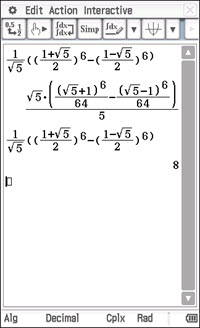Arithmetic progressions (or arithmetic sequences) are sequences with a common difference (i.e. the same number is added or subtracted to get the next number in the sequence).
For example,
![]()
or
![]()
The ![]() term of an arithmetic progression is
term of an arithmetic progression is ![]() where
where ![]() is the first term and
is the first term and ![]() is the common difference.
is the common difference.
i.e. For the sequence above, ![]()
An arithmetic series is the sum of the arithmetic progression.
For example, if the sequence is
![]()
then ![]()
The series is also a sequence and we are going to find the general term, ![]() .
.
![]()
which we can write as
![]()
Now, I am going to write that in reverse order (to make the next bit more obvious)
![]()
I am going to add the two versions of ![]() together
together
Each term has an ![]() and there are
and there are ![]() terms, so we now have
terms, so we now have ![]() . The
. The ![]() terms, we going to group together
terms, we going to group together
![]()
Which simplifies to ![]() and we have
and we have ![]()
![]() terms. So this part of the sum is
terms. So this part of the sum is ![]()
Thus we have
![]()
Which simplifies to
(1) ![]()
Let’s test it, remember the sequence ![]() . We know
. We know ![]()
![]()

